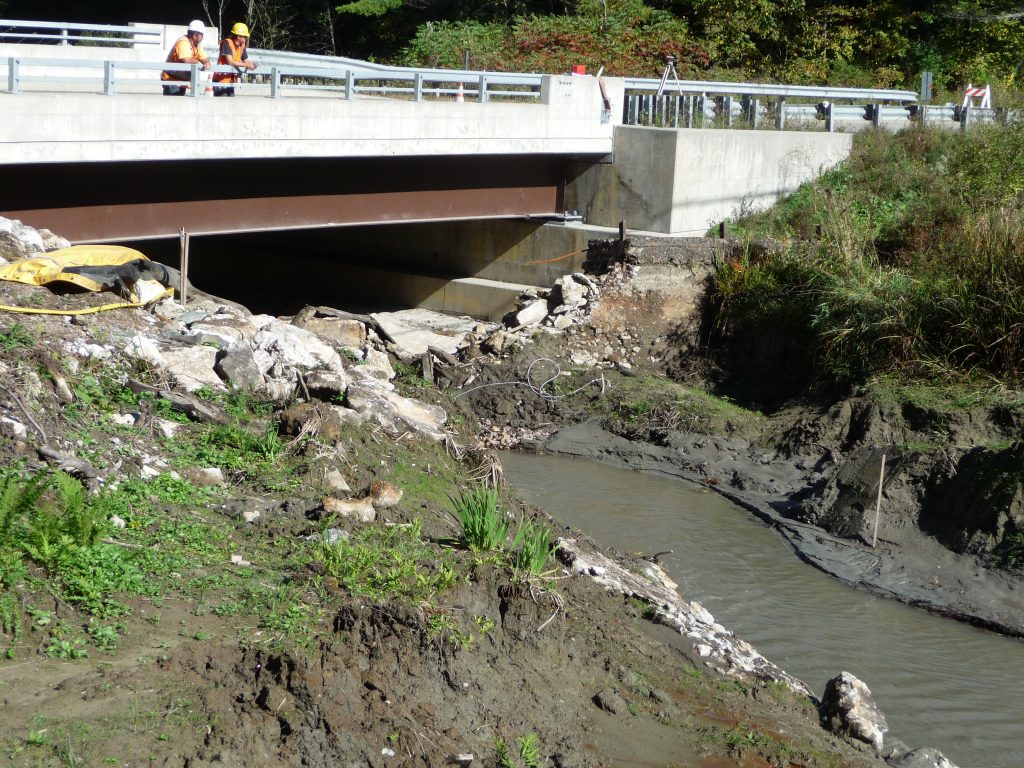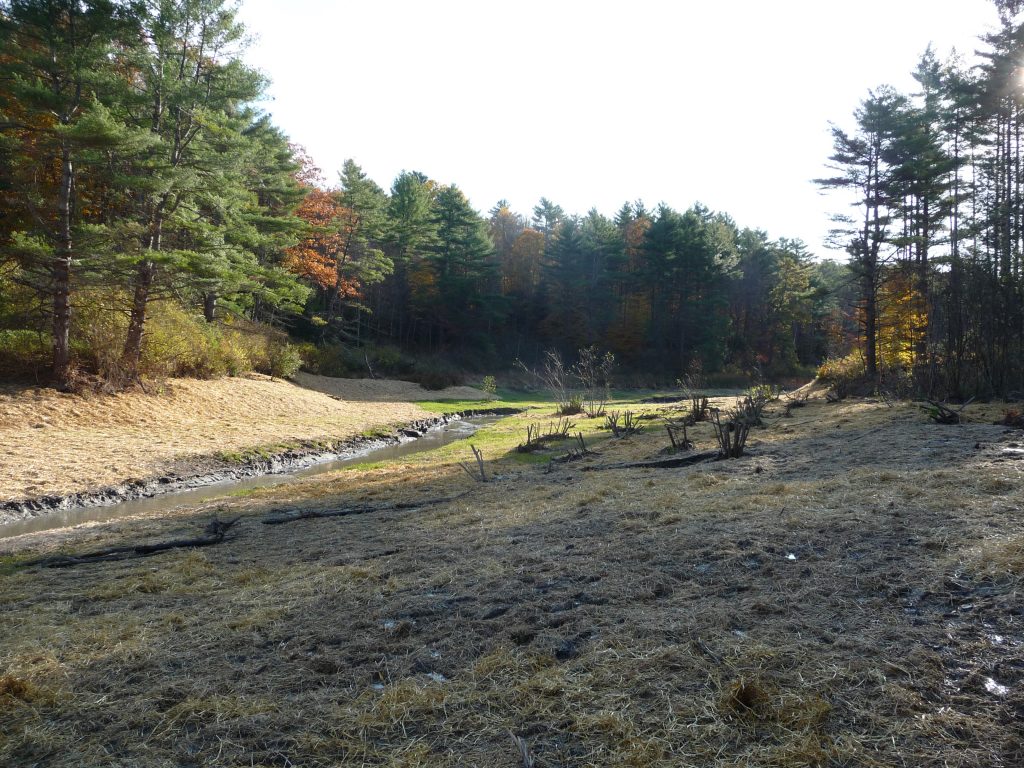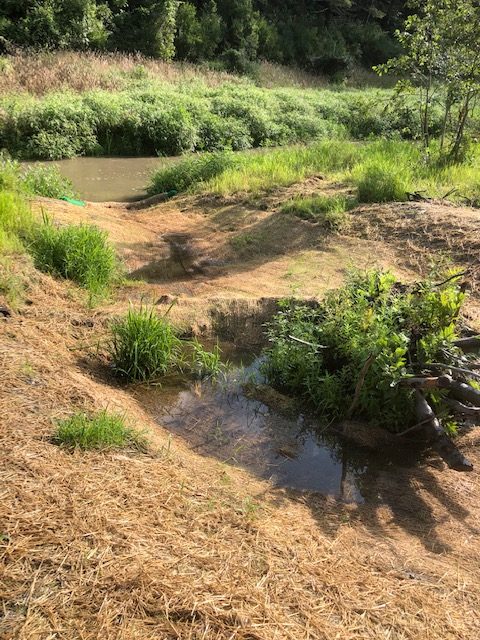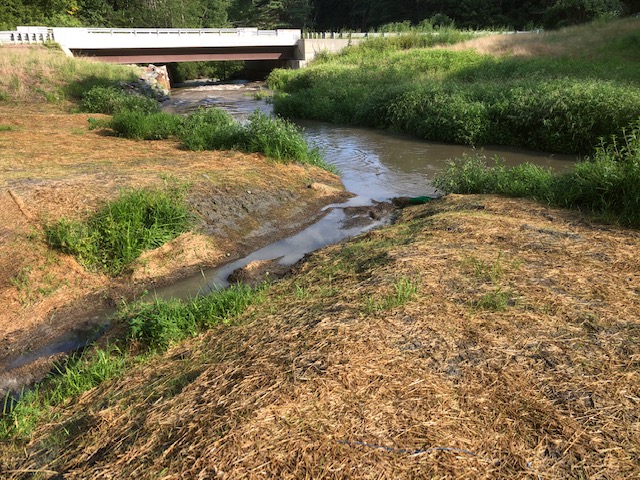
Last year, VNRC worked with various partners to remove the Mill Pond Dam in Colchester, which had not served a purpose since the last mill it powered burned down in 1941. Find our account of the project here. The removal, completed in November 2019, reconnected 31 miles of stream, bringing Indian Brook closer to its natural free-flowing state and restoring habitat for a diverse aquatic habitat.
Eleven months later, the river’s equilibrium channel is forming and the sediment transport supply chain is in motion. This spring, after a huge fall 2019 storm event the dam removal needed some buttoning-up — as is typical for this type of project . Following the storm, a pedestrian bridge floated from approximately ½ mile upstream and lodged itself above the dam, while spring seeps formed new channels as the water works to find a new path across the restored floodplains and river banks toward the mother channel defined as Indian Brook.
We want to give this project the best recipe for ecological success, so we planned a spring clean-up to support natural biodiversity, channel evolution, and sinuosity. Although native plants from the adjacent seed supply were already knee high, some bare patches needed additional plant growth. So we added some locally sourced, woody shrubs, and herbaceous seed varieties.

During construction 
After (Nov. 2019) 
August 2020
The plants included willows, red osier dogwood and meadowsweet along with herbaceous seed species, including redtop, fescue, wild rye, creeping bentgrass, swamp milkweed, Joe-Pye weed, sensitive fern, soft rush, nodding sedge, shallow sedge, blue vervain, boneset, and New England aster.
In 2020, the project begins 5 years of post-removal monitoring both for permit compliance and scientific study. The field report shows every sign that the river is reconnecting.
Thank you to our partners expertise in coordinating, implementing and monitoring this phase of restoration – Milone and Macbroom, Inc, Fitzgerald Environmental Associates, EcoSolutions, VT DEC, and US FWS. for all of their expertise. We can’t wait to see Indian Brook continue to evolve! Learn more about VNRC’s dam removal program at https://vnrc.org/clean-water/dam-removal/.





